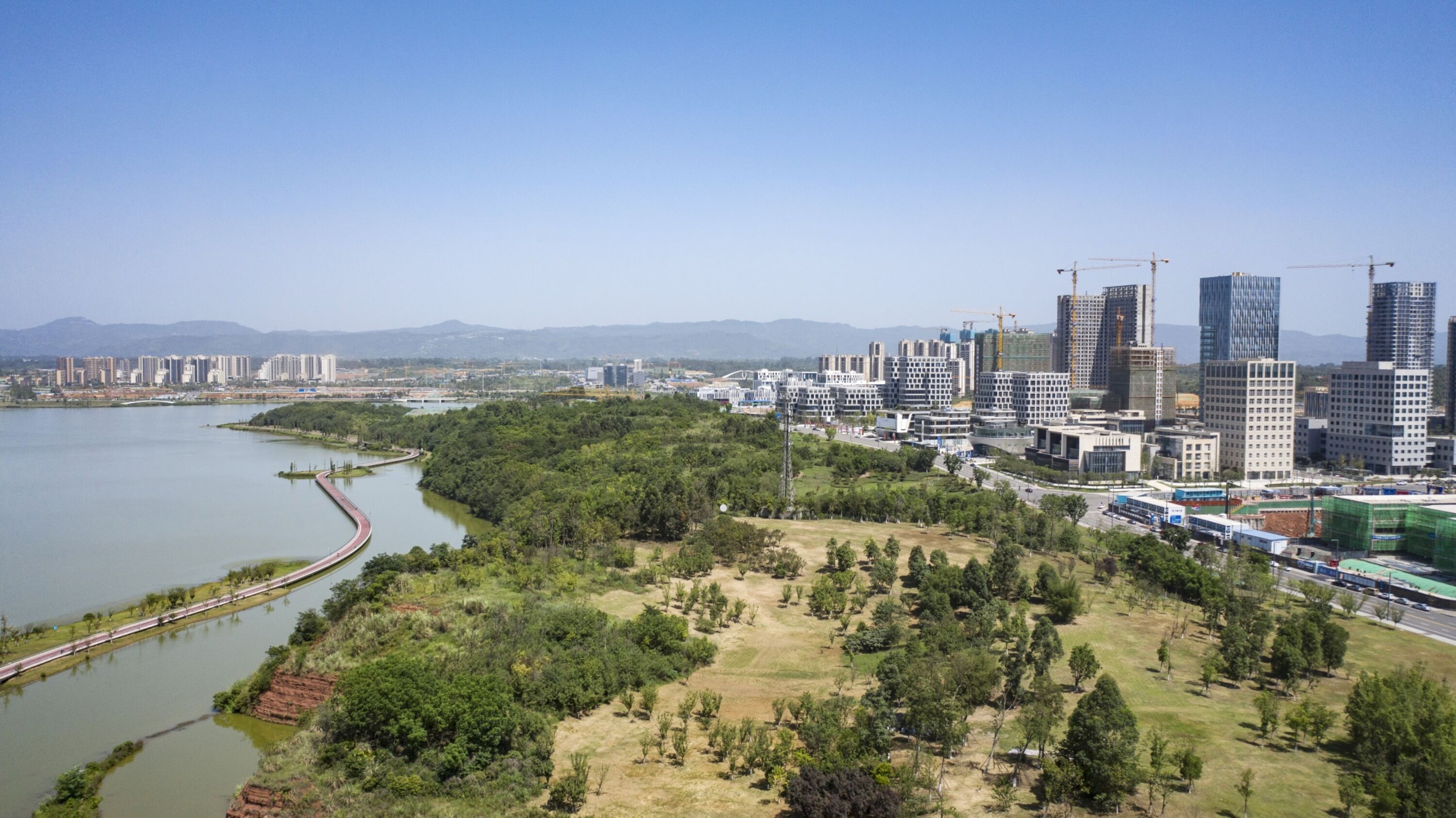Just outside the southwestern city of Chengdu, China is building an urban paradise bigger than Houston. Visitors are greeted by a sea of manicured grass encircling a man-made lake, dotted with water lilies, that is almost the size of New York’s Central Park. This is Tianfu Park City, one of hundreds of “eco city” developments taking over farms and rural land in China as the government tries to accommodate the 100 million people it had planned to move from villages into urban areas by 2020. After decades of unbridled urbanization that allowed concrete high-rise suburbs to sprawl around its big cities, eating up farmland and creating pollution, China is trying to find a more sustainable way to grow and provide citizens with a better lifestyle.
“The air here is really good and wherever you go it’s green,” said a 56-year-old resident surnamed Fan, who moved to the area in 2013 when it was still a neglected suburb of Chengdu. “I don’t regret my decision at all, my apartment’s value has doubled.”
“New cities are like experiments where the governments can easily test innovative ideas,” said Zheng Siqi, faculty director of the Massachusetts Institute of Technology’s Sustainable Urbanization Lab. “The new city does not need to deal with existing residents,” unlike when the government redevelops existing ones, Zheng said.

China’s green approach is designed to tackle two pressing environmental issues. Large-scale construction of urban infrastructure and residential housing has become one of the country’s biggest sources of greenhouse gases. Realizing the nation’s urbanization goal could produce more than one gigaton of additional carbon dioxide, according to a study by researchers at the University of Maryland. At the same time, both rural and urban environments have deteriorated. Most of China’s major cities suffer from filthy air and poor quality water. About 90% of China’s grasslands and 40% of its major wetlands are experiencing degradation, according to the Ministry of Ecology and Environment.
In 2012, President Xi Jinping began stressing his theory of an “eco-civilization,” where development takes environmental costs into consideration. The aspiration hasn’t always translated into concrete policies. Government guidelines on building new cities contain buzzwords like “low-carbon” and “environmental protection,” but few specific requirements in terms of energy efficiency and building materials.
Tianfu has flourished because of Xi’s personal endorsement. In 2018, he visited Chengdu and remarked that its development should “highlight the characteristics of a park city.” Local cadres quickly added “park city” to its official name and put up street banners proclaiming its “park city” status. A Park City Research Institute was established to help the project become “a globally famous and successful model” for urbanization.
Wu Changhua, senior researcher at Beijing-based think tank Center for China and Globalization, said China’s policies show the top leadership is determined to restore the environment, but that’s not always what motivates local bureaucrats. “A deeper driver could be lush subsidies and stimulus for economic growth,” she said.
